Financial Services

Customer Experience during the holiday shopping season During the holidays, consumers transact at a much greater rate than any other time of the year. Many risk-management departments respond by loosening the reins on their decision engines to improve the customer experience — and to ensure that this spike does not trigger a response that would impede a holiday shopper’s desire to grab one more stocking stuffer or a gift for a last-minute guest. As a result, it also is the busy season for fraudsters, and they use this act of goodwill toward your customers to improve their criminal enterprise. Ultimately, you are tasked with providing a great customer experience to your real customers while eliminating any synthetic ones. Recent data breaches resulted in large quantities of personally identifiable information that thieves can use to create synthetic identities being published on the Dark Web. As this data is related to real consumers, it can be difficult for your identity-authentication solution to determine that these identities have been compromised or fabricated, enabling fraudsters to open accounts with your organization. Experian’s Identity Element Network™ can help you determine when synthetic identities are at work within your business. It evaluates nearly 300 data-element combinations to determine if certain elements appear in cyberspace frequently or are being used in combination with data not consistent with your customer’s identity. This proven resource helps you manage fraud across the Customer Life Cycle and hinder the damage that identity thieves cause. Identity Element Network examines a vast attribute repository that grows by more than 2 million transactions each day, revealing up-to-date fraud threats associated with inconsistent or high-risk use of personal identity elements. Our goal is to provide the comfort of knowing that you are transacting with your real customers. Don’t get left in the cold this holiday season — fraudsters are looking for opportunities to take advantage of you and your customers. Contact your Experian account executive to learn how Identity Element Network can help make sure you are not letting fraudsters exploit the customer experience intended for your real customers. Learn more about the delicate balance between customer and criminal by viewing our fraud e-book.

Electronic signatures and their emerging presence in our Internet-connected world I had the opportunity to represent Experian at the eSignRecords 2015 conference in New York City last week. The concept of electronic signature, while not new, certainly has an emerging presence in the Internet-connected world — as evidenced by the various attendee companies that were represented, everything from home mortgages to automobiles. Much of the discussion focused on the legal aspects of accepting an electronic signature in lieu of an in-person physical signature. The implications of accepting this virtual stamp of approval were discussed, as well as the various cases that already have been tried in court. Of course, the outcome of those cases shapes the future of how to properly integrate this new form of authorization into existing business processes. Attendees discussed the basic concept of simply accepting a signature on an electronic pad as opposed to one written on a piece of paper. That act alone has many legal challenges even though it provides the luxury of in-person authentication through a face-to-face meeting. The complexities and risk increase exponentially when these services are extended over the Internet. The ability to sign documents virtually opens up a whole new world of business opportunities, and the concept certainly caters to the consumer’s need for convenience. However, the anonymity of the Internet presents the everyday challenge of balancing consumer expectations of greater ease of use with necessary fraud prevention measures. Ultimately, it always comes back to understanding who is actually signing that document. All of this highlights the need for robust authentication and security measures. As more and more legal documents and contracts are passed around virtually, the opportunity to properly screen and verify who has access to the documents gets more critical. Many organizations still rely on the tried-and-true method of knowledge-based authentication (KBA), while many others have called for its end. KBA continues to soldier on as an effective way to ensure that people on the other end of the wire are who they say they are by asking questions that — presumably — only they know the answers to. In most cases, KBA is viewed as a “check the box” step in the process to satisfy the lawyers. In certain cases, that’s all you need to do to ensure compliance with legal policy or regulatory requirements. It starts to get tricky is when there’s more on the line than just “check the box” actions. When the liability of first- or third-party fraud, becomes greater than simple compliance, it’s time to implement tighter security, while at the same time limiting the amount of friction caused by the process. Many in attendance discussed the need for layers of authentication based on the type of documents that are being processed and handled. This speaks directly to the point that one size does not fit all. As the industry matures and acceptance of e-signatures increases, so too does the need for more robust, flexible options in authentication. Another topic — that was quite frankly foreign to everyone we talked to — was the need for security around the concept of account takeover. When discussing this type of fraud, most attendees did not even consider this to be a hole in their strategy. Consider this fictional scenario. I’m responsible for mergers and acquisitions for my publicly traded company. I often share confidential information via electronic means, leveraging one of the many electronic signature solutions on the market. I become a victim of a phishing attack and unknowingly provide my login credentials to the fraudster. The fraudster now has access to every electronic document that I have shared with various organizations — most of which have been targets for mergers and acquisitions. Fraudsters are creative. They exploit new technologies — not because they’re trendsetters, but because oftentimes these new technologies fail to consider how fraudsters can benefit from the system. If you are considering adopting e-signature as a formal process, please consider implementing: Flexible levels of authentication based on the risk and liability of the documents that are being presented and what they are protecting FraudNet for Account Takeover, which enhances security around access to these critical documents to protect against data breaches Not only the needs and experiences of your own business, but customer needs as well to enable to the best possible customer interactions If you haven’t considered implementing e-signature technology into your business process, you should — but be sure to have your fraud team present when considering the implementation.

This month, it’s all about parties and gift giving and holiday traditions. Fast forward a month, however, and consumers will be in a different place. Today, they are spending. In a few weeks, the focus will be on paying down bills, or perhaps seeking solutions to consolidate or transfer balances. The good news for the economy is consumers are expected to spend more this holiday season – $830 on average, a huge jump from last year’s $720. Total retail is expected to increase 5.6 percent, while ecommerce (thanks Amazon Prime) should rise 13.9 percent. Credit card originations are also trending up more than 1 percent year-over-year as of the end of the third quarter of 2015. So what does this mean for lenders? Card utilization is peaking, creating the perfect scenario for many consumers to seek balance transfers, consolidate debt and search for competitive rates, especially if they’ve been leveraging high-interest cards. A recent analysis by NerdWallet revealed consumers are more interested in shopping with store credit cards than with traditional cards this season, putting them at particular risk of sky-high rates. A deeper look at utilization revealed super-prime consumers use less than 6 percent of their available credit limits, while consumers in the deep-subprime tier use nearly every dollar allotted. “Consumers spend billions during the holidays on high-interest credit cards,” said Kyle Matthies, Experian product manager. “Many of them have excellent credit, but struggle juggling multiple payments, which can lead to delinquencies. Credit card consolidation can provide relief by lowering interest rates and simplifying repayment.” Card issuers that remain passive during this window may find their portfolios at-risk as customers take advantage of seasonal offers. Competitors who capitalize on this peak season of balance transfers will likely be mailing out offers to acquire and grow their card portfolio, as well as protect their current card base. “As banks and credit unions finish out the calendar year, they might seek one last marketing push, so a balance-transfer campaign might be the ideal play,” said Matthies. “Still, to avoid blowing the budget, it helps to leverage data to know exactly who to target – both within and outside the card portfolio.” Specific models and/or tools can identify who to try to retain, as well as provide insights on whom to conquest from the outside. An index can additionally offer guidance on when to lower APRs, sweeten rewards and increase credit limits for specific consumers. The post-holiday balance-transfer wave is coming. The question is which lenders will be best prepared to protect and grow their respective card portfolios.
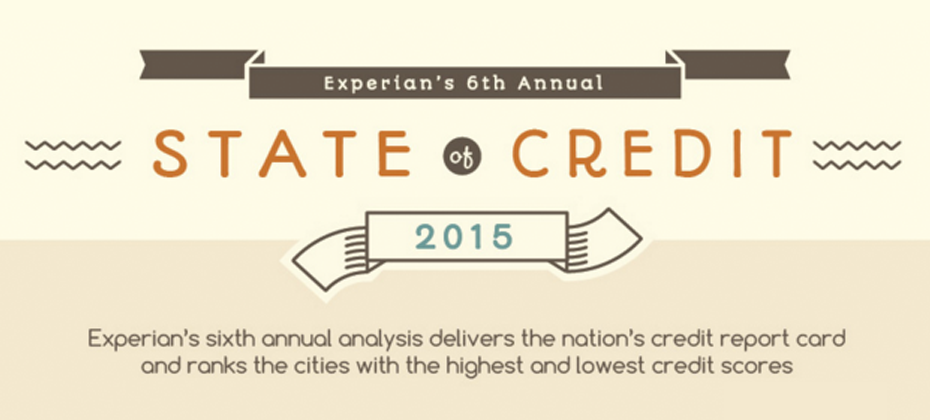
Hello from the other side ... While Adele scores big on the Billboard Hot 100 by crooning of coming to terms with a lover from the past, a new Experian “State of Credit” reveals we are officially on the “other side” of the recession – at least if you’re looking at the nation’s credit scores. While the bottom of the Great Recession was reached in the second quarter of 2009, steady job growth was not seen until 2011, and even since, some economists claim it has been a "Tortoise Recovery.” But key findings from Experian’s 6th annual study, ranking top and bottom cities across the nation in regards to credit, suggests the U.S. is strong. “If I were to give a grade to the overall picture of credit in the United States, I would give it an A minus,” said Michele Raneri, Experian’s vice president of analytics and new business development. “I’m optimistic about the state of credit as we are seeing more loans being extended, late payments are decreasing and consumers are continuing to gain more confidence in originating loans. There definitely is growth and momentum — we’re back to prerecession levels in nearly every category, which means lenders are in a prime position to capitalize on this market and foster business growth.” Which states topped the credit charts? As in previous years, Minnesota continues to shine with three of its cities — Mankato, Rochester and Minneapolis — leading with credit scores of 706, 705 and 704, respectively. Greenwood, Miss. and Albany, Ga. ranked the lowest with scores of 612 and 622. While still at the bottom of the list with a score of 612, Greenwood, Miss., residents did improve their score by three points, more than any other city in the bottom 10. Overall, the report reveals the national credit score increased by three points over the last year (and by five points since 2013) and the 10 cities with the highest credit scores in the nation increased their scores by an average of 1.8 points. Additionally, bankcards, retail cards and mortgage lending showed significant growth, making this year’s study an indicator of the nation’s confidence in the credit market. Just in time for the election year, this year’s study includes insight into how residents of these top and bottom metropolitan statistical areas (MSAs) identify politically. The study found that half of the highest-scoring cities have residents whose views skew more middle of the road, while residents of lower-scoring cities are more likely to lean conservative. The full lists of the top 10 and bottom 10 cities are featured (scores are rounded to the nearest whole number). Detailed study highlights include the following changes over the last year: The national VantageScore® credit score is up by three points, from 666 to 669. Bankcard lending continues to increase, with new bankcards up 7.7 percent. The average number of bankcards per consumer is up 2.8 percent to 2.24 cards. Retail card lending also is on the rise, with a 10.8 percent increase in new originations. The average number of retail cards per consumer is up 0.3 percent to 1.55 cards from last year and up by 7 percent since 2013. Instances of late payments (includes bankcard and retail) decreased by 4.4 percent over the last year and by 17.3 percent since the height of the recession in 2010. Average debt2 is up 2.1 percent to $29,093 per consumer. Mortgage originations increased by 42.5 percent. For a more complete look at the above cities as well as the other MSAs studied, visit http://www.livecreditsmart.com to view a fully interactive map and infographic. Purchase The Experian Market Intelligence Brief, a quarterly report that includes more than 70 charts and data trends on loan originations, outstanding loans and delinquency performance metrics spanning three years.

Profile of an online fraudster I recently read a study about the profile of a cybercriminal. While I appreciate the study itself, one thing it lacks perspective on is an understanding of how identity data is being used to perpetrate fraud in the online channel. One may jump to conclusions about what is a good indicator for catching fraudsters. These very broad-brush observations may result in an overwhelming number of false positives without digging in deeper. Purchase value A single approach for understanding the correlation between purchase value and fraud does not work to best protect all businesses. Back in 2005, we saw that orders under $5 were great indicators of subsequent large-ticket fraud. For merchants that sell large-ticket items, such as electronics, those same rules may not be effective. To simply believe that the low dollar amount is the extent of the crime and not just a precursor to the real, bigger crime indicates a lack of understanding of how fraudsters work to manipulate a system. For some merchants, where fraudsters know they can go to do card testing against their business, low-dollar-amount rules may apply. However, for other businesses a different set of rules must be put into place. Time of day We have been tracking fraud time of day as a rule since 2004, but the critical point is a clear definition of which time of day. For the merchant, 3 a.m. is very different than 3 a.m. for a fraudster who is in Asia or Eastern Europe, where 3 a.m. merchant time is actually the middle of the online fraudster’s day. FraudNet is designed to identify the time from the user’s device and runs its rules from the user’s time. We find that every individual business will have a very specific threat profile. Businesses need to build their individual fraud strategy around their overall attack rate taking into account the strength of the defense and the ability to be flexible to accommodate the nuances for individual consumers. A general approach to fraud mitigation inevitably results in a system that begins to chase broad averages, which leads to excessive false positives and mediocre detection. That’s what drives us to do the job better. The proof of every fraud solution should lie in its ability to catch the most fraud without negatively impacting good customers.
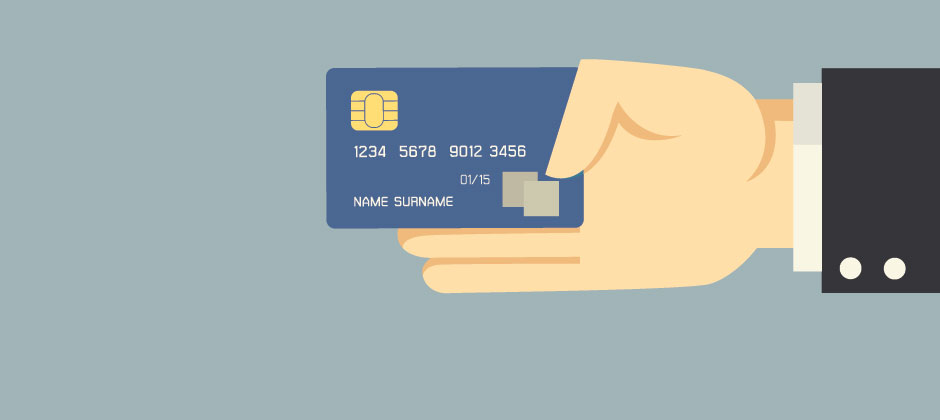
What the EMV Shift means for you I recently facilitated a Webinar looking at myths and truths in the market regarding the EMV liability shift and what it means for both merchants and issuers. I found it to be a very beneficial discussion and wanted to take some time to share some highlights from our panel with all of you. Of course, if you prefer to hear it firsthand, you can download the archive recording here. Myth #1: Oct. 1 will change everything Similar to the hype we heard prior to Y2K, Oct. 1, 2015, came and went without too much fanfare. The date was only the first step in our long and gradual path to EMV adoption. This complex, fragmented U.S. migration includes: More than 1 billion payment cards More than 12 million POS terminals Four credit card networks Eighteen debit networks More than 12,000 financial institutions Unlike the shift in the United Kingdom, the U.S. migration does not have government backing and support. This causes additional fragmentation and complexity that we, as the payments industry, are forced to navigate ourselves. Aite Group predicts that by the end of 2015, 70 percent of U.S. credit cards will have EMV capabilities and 40 percent of debit cards will be upgraded. So while Oct. 1 may not have changed everything, it was the start of a long and gradual migration. Myth #2: Subscription revenues will plummet due to reissuances According to Aite, EMV reissuance is less impactful to merchant revenues than database breaches, since many EMV cards are being reissued with the same pan. The impact of EMV on reoccurring transactions is exaggerated in the market, especially when you look at the Update Issuer provided by the transaction networks. There still will be an impact on merchants, coming right at the start of the holiday shopping season. The need for consumer education will fall primarily on merchants, given longer lines at checkout and unfamiliar processes for consumers. Merchants should be prepared for charge-back amounts on their statements, which they aren’t used to seeing. Lastly, with a disparate credit and debit user experience, training is needed not just for consumers, but also for frontline cashiers. We do expect to see some merchants decide to wait until after the first of the year to avoid impacting the customer experience during the critical holiday shopping season, preferring to absorb the fraud in the interest of maximizing consumer throughout. Myth #3: Card fraud will decline dramatically We can look to countries that already have migrated to see that card fraud will not, as a whole, decline dramatically. While EMV is very effective at bringing down counterfeit card fraud, organized crime rings will not sit idly by while their $3 billion business disappears. With the Canadian shift, we saw a decrease in counterfeit card loss but a substantial increase in Card Not Present (CNP) fraud. In Canada and Australia, we also saw a dramatic, threefold increase in fraudulent applications. When criminals can no longer get counterfeit cards, they use synthetic and stolen identities to gain access to new, legitimate cards. In the United States, we should plan for increased account-takeover attacks, i.e., criminals using compromised credentials for fraudulent CNP purchases. For merchants that don’t require CVV2, compromised data from recent breaches can be used easily in an online environment. According to Aite, issuers already are reporting an increase in CNP fraud. Fraudsters did not wait until the Oct. 1 shift to adjust their practices. Myth #4: All liability moves to the issuer EMV won’t help online merchants at all. Fraud will shift to the CNP channel, and merchants will be completely responsible for the fraud that occurs there. We put together a matrix to illustrate where actual liability shifts and where it does not. Payments liability matrix Note: Because of the cost and complexity of replacing POS machines, gas stations are not liable until October 2017. For more information, or if you’d like to hear the full discussion, click here to view the archive recording, which includes a great panel question-and-answer session.

While walking through a toy store in search of the perfect gift for a nephew, I noticed the board game Risk, which touts itself as “The Game of Global Domination.” For those who are unaware, the game usually is won by players who focus on four key themes: Strategy — Before you begin the game, you need a strategy to attack new territories while defending your own Attack — While you have the option to sit back and defend your territory, it’s better to attack a weakened opponent Fortify — When you are finished attacking, it’s often best to fortify your position Alliances — While not an official part of the game, creating partnerships is necessary in order to win These themes also are relevant to the world of real-life fraud risk prevention. The difference is that the stakes are real and much higher. Let’s look at how these themes play out in real-life fraud risk prevention: Strategy — Like in the game, you need a strategy for fraud risk detection and prevention. That strategy must be flexible and adaptable since fraudsters (your enemies) also continuously adapt to changing environments, usually at a much quicker, less bureaucratic pace. For example, your competitors (other countries) may improve their defenses, so fraudsters will mount a more focused attack on you. Fraudsters also may build alliances to attack you from different vectors or channels, resulting in a more sophisticated, comprehensive strike. Attack — As the game begins, all players have access to all competitors (countries). This means that fraudsters might have the upper hand in a certain area of the business. You can sit back and try to defend the territory you already “own,” where fraudsters have no traction, but it’s best to be aggressive and attack fraudsters by expanding your coverage across all channels. For example, you might have plenty of controls in place to manage your Web orders (occupied territory), but your call center operations (opponents’ territory) aren’t protected, i.e., the fraudsters “own” this space. You need to attack that channel to drive fraudsters out. Fortify — In the game, you can fortify your position after a successful move — that is, move more troops to your newly conquered territories. In real life, you always have the option to fortify your position, and you should constantly look for ways to improve your controls. You can’t afford to maintain on your current position, because fraudsters constantly are looking for weaknesses. Alliances — In business, we often are hesitant to share information with our competitors. Fraudsters use this to their advantage. Just as fraudsters act in a coordinated fashion, so must we. Use all available resources and partners to shore up your defenses Leverage the power of consortium data Learn new methods from traditional competitors Always team up with internal and external partners to defend your territory If you apply these themes, you will be positioned for global domination in the fight against fraud risk. You can read more about fraud-prevention strategies in our recent ebook, Protecting the Customer Experience. As a side note, I’m always ready for a game of Risk, so contact me if you’re interested. But be forewarned — I’m competitive.

What will the EMV shift really mean for consumers and businesses here in the U.S.? Businesses and consumers across the U.S. are still adjusting to their new EMV credit cards. The new credit cards are outfitted with computer chips in addition to the magnetic strips to help prevent point-of-sale (POS) fraud. The new system, called EMV (which stands for Europay, MasterCard and Visa), requires signatures for all transactions. EMV is a global standard for credit cards. In the wake of the rising flood of large-scale data breaches at major retailers – and higher rates of counterfeit credit card fraud – chip-and-signature, as it is also called, is designed to better authenticate credit card transactions. Chip-and-signature itself is not new. It has been protecting consumers and businesses in Europe for several years and now the U.S. is finally catching up. But what will the EMV system really mean for consumers and businesses here in the U.S.? There is the potential for businesses that sell both offline and online, to see an increase in fraud that takes place online called Card Not Present (CNP) fraud. Will credit card fraud ever really be wiped out? Can we all stop worrying that large-scale point-of-sale breaches will happen again? Will the EMV shift affect holiday shopping and should retailers be concerned? Join us as we explore these questions and more on an upcoming Webinar, Chipping Away at EMV Myths. Our panel of experts includes: David Britton, Vice President, Industry Solutions, Experian Julie Conroy, Research Director, Aite Group Mike Klumpp, Director of Fraud Prevention, Citibank Moderated by: Keir Breitenfeld, Vice President, Product Management, Experian

Understanding and managing first party fraud Background/Definitions Wherever merchants, lenders, service providers, government agencies or other organizations offer goods, services or anything of value to the public, they incur risk. These risks include: Credit risk — Loosely defined, credit risk arises when an individual receives goods/services in exchange for a promise of future repayment. If the individual’s circumstances change in a way that prevents him or her from paying as agreed, the provider may not receive full payment and will incur a loss. Fraud risk — Fraud risk arises when the recipient uses deception to obtain goods/services. The type of deception can involve a wide range of tactics. Many involve receiving the goods/services while attributing the responsibility for repayment to someone else. The biggest difference between credit risk and fraud risk is intent. Credit risk usually involves customers who received the goods/services with intent to repay but simply lack the resources to meet their obligation. Fraud risk starts with the intent to receive the goods/services without the intent to repay. Between credit risk and fraud risk lies a hybrid type of risk we refer to as first-party fraud risk. We call this a hybrid form of risk because it includes elements of both credit and fraud risk. Specifically, first party fraud involves an individual who makes a promise of future repayment in exchange for goods/services without the intent to repay. Challenges of first party fraud First party fraud is particularly troublesome for both administrative and operational reasons. It is important for organizations to separate these two sets of challenges and address them independently. The most common administrative challenge is to align first-party fraud within the organization. This can be harder than it sounds. Depending on the type of organization, fraud and credit risk may be subject to different accounting rules, limitations that govern the data used to address risk, different rules for rejecting a customer or a transaction, and a host of other differences. A critical first step for any organization confronting first-party fraud is to understand the options that govern fraud management versus credit risk management within the business. Once the administrative options are understood, an organization can turn its attention to the operational challenges of first-party fraud. There are two common choices for the operational handling of first-party fraud, and both can be problematic. First party fraud is included with credit risk. Credit risk management tends to emphasize a binary decision where a recipient is either qualified or not qualified to receive the goods/services. This type of decision overlooks the recipient’s intent. Some recipients of goods/services will be qualified with the intent to pay. Qualified individuals with bad intentions will be attracted to the offers extended by these providers. Losses will accelerate, and to make matters worse it will be difficult to later isolate, analyze and manage the first party fraud cases if the only decision criteria captured pertained to credit risk decisions. The end result is high credit losses compounded by the additional first party fraud that is indistinguishable from credit risk. First party fraud is included with other fraud types. Just as it’s not advisable to include first party fraud with credit risk, it’s also not a good idea to include it with other types of fraud. Other types of fraud typically are analyzed, detected and investigated based on the identification of a fraud victim. Finding a person whose identity or credentials were misused is central to managing these other types of fraud. The types of investigation used to detect other fraud types simply don’t work for first-party fraud. First party fraudsters always will provide complete and accurate information, and, upon contact, they’ll confirm that the transaction/purchase is legitimate. The result for the organization will be a distorted view of their fraud losses and misconceptions about the effectiveness of their investigative process. Evaluating the operational challenges within the context of the administrative challenges will help organizations better plan to handle first party fraud. Recommendations Best practices for data and analytics suggest that more granular data and details are better. The same holds true with respect to managing first party fraud. First party fraud is best handled (operationally) by a dedicated team that can be laser-focused on this particular issue and the development of best practices to address it. This approach allows organizations to develop their own (administrative) framework with clear rules to govern the management of the risk and its prevention. This approach also brings more transparency to reporting and management functions. Most important, it helps insulate good customers from the impact of the fraud review process. First-party fraudsters are most successful when they are able to blend in with good customers and perpetrate long-running scams undetected. Separating this risk from existing credit risk and fraud processes is critical. Organizations have to understand that even when credit risk is low, there’s an element of intent that can mean the difference between good customers and severe losses. Read here for more around managing first party fraud risk.

Commerce: A conversation between merchants and consumers Last week I joined Sherri Haymond of MasterCard and Bharathi Ramavarjula of Facebook on a panel moderated by Paul Moreton, for a CapitalOne summit on Payments. When asked what was more important for the future of commerce – Sherri spoke of how security and trust is key, and I talked about how messaging has intersected with payments, (and in Wechat’s case) now intersecting with lending – with Bharathi eloquently summing it up as – “Facebook sees Commerce as a conversation”. If Commerce is a conversation between a merchant and a consumer (however loosely defined those terms have now come to be), then it has become contorted and clustered around payments and point of sale. Till not too long ago, there also existed a high barrier for entry to become a merchant, to accept payments, to promote and sell online, and to find cheap capital for growth. All these things are different now – and unsurprisingly, little of this progress can be attributed to banks or other current payment stakeholders. For example: I didn’t know I could be a merchant till Square showed me how easy it is to accept credit cards, and setup a small business. I didn’t know that I could become a driver in my spare time – till Uber showed me how easy it is to become one. I didn’t know that I could become a landlord till AirBnB showed me how easy it is to find people to rent it to. I know I am oversimplifying. These three and others like them chose to use technology and smartphones to exponentially scale the size of existing two-sided markets as well as create new ones. When another billion people on the planet stand to be connected over the next five years – entirely via cheap smartphones – it is hard to view commerce as a zero sum opportunity. Being wired for commerce may come to mean something entirely different for those billion, and messaging apps and social networks will replace point of sale for discovery, acquisition and engagement. This is why I believe changes in payments today are largely incremental and localized to the developed world. The platform driven efforts – such as tokenization – do go beyond any specific modality (card, mobile, connected things) to further the notion and benefit of trust entirely within the network. But that is as far as it goes. Issuers and networks may have little role to play in discovery, consumer loyalty and now more so than ever – identity. Case in point: Through Relay, Stripe enables a retailer to push a button and start selling through new channels while taking comfort in that his pricing and inventory will remain real-time. Through Messenger and Shopping – Facebook will encapsulate product discovery, guide the intent to purchase, host the informed pre-purchase debate and even payment – flattening it and never letting it out of sight. It is no accident that each of the four horsemen of the Internet has heavily invested in voice assistants – (Apple/Siri, Google/Now, Facebook/M, Amazon/Echo, Microsoft/Cortana) – especially as we confront old habits in interaction design that are failing on mobile, to continue to shorten the distance between intent and action through things like 3D Touch, the Amazon Dash button, and intelligent agents. Everything that is interesting in commerce: product discovery, search, interface and interaction design are all being done – with the sole exception of Amazon – by an entity that is neither a retailer nor a bank. Conversational commerce does not end with payments being swallowed up by messaging apps. It is a pre-requisite, but hardly not even a way point in that journey. Originally posted on: Droplabs.co

Driver of success: Mitigate auto lending risk A culture of learning is a key driver of success. Does your risk culture continue to adapt? There are many issues within auto lending that are unique to other financial services ecosystems: the direct versus indirect relationship, insights of the asset influencing the risk insights, new versus used vehicle transactions influencing risk and terms, and more. However, there is one universal standard common to all financial services cultures — change.. Change is constant, and an institution’s marketing and risk organizations need to be constantly learning to stay abreast of dealer, consumer, competitor and regulatory issues. No one has said it better than Jack Welch: “An organization’s ability to learn, and translate that learning into action rapidly, is the ultimate competitive advantage.” This statement was quickly followed by a command: “Change before you have to.” So the challenge for the portfolio manager is to ensure there are the system features, data sources, management reporting structures, data access features, analytic skills, broad management team skill sets, and employee feedback and incentive plans to drive the organization to a constant state of renewal. The challenge for many smaller and midsize lenders is to determine what systems and skills need to be in-house and what tasks are better left for a third party to handle. For consumer-level data, vehicle history and valuation data, and fraud alert flags, it seems reasonable to leverage solutions from established third parties: credit reporting agencies. After that, the solutions to the many other needs may be more specific to the lender legacy skill set and other support relationships: Are there strong in-house data-management and analytic skills? There is a significant difference between management information and data analysis driving policy and portfolio performance forecasts. Does the internal team have both? Is the current operating platform(s) feature-rich and able to be managed and enhanced by internal resources within tight time frames? Is the management team broadly experienced and constantly updating best-practice insights? Is the in-house team frequently engaged with the regulatory community to stay abreast of new mandates and initiatives? There is a solution. Experian® offers the data, software, solutions, management information, analytic solutions and consulting services to tie everything together for a lender-specific best configuration. We look forward to hearing from you to discuss how we can help.

Key drivers to auto financial services are speed and precision. What model year is your decisioning system? In the auto world the twin engineering goals are performance and durability. Some memorable quotes have been offered about the results of all that complex engineering. And some not so complex observations. The world of racing has offered some best examples of the latter. Here’s a memorable one: “There’s no secret. You just press the accelerator to the floor and steer left. – Bill Vukovich When considering an effective auto financial services relationship one quickly comes to the conclusion that the 2 key drivers of an improved booking rate is the speed of the decision to the consumer/dealer and the precision of that decision – both the ‘yes/no’ and the ‘at what rate’. In the ‘good old days’ a lender relied upon his dealer relationship and a crew of experienced underwriters to quickly respond to a sales opportunities. Well, these days dealers will jump to the service provider that delivers the most happy customers. But, for all too many lenders some automated decisioning is leveraged but it is not uncommon to still see a significantly large ‘grey area’ of decisions that falls to the experienced underwriter. And that service model is a failure of speed and precision. You may make the decision to approve but your competition came in with a better price at the same time. His application got booked. Your decision and the cost incurred was left in the dust – bin. High on the list of solutions to this business issue is an improved use of available data and decisioning solutions. Too many lenders still underutilize available analytics and automated decisions to deliver an improved booking rate. Is your system last year’s model? Does your current underwriting system fully leverage available third party data to reduce delays due to fraud flags. Is your ability to pay component reliant upon a complex application or follow-up requests for additional information to the consumer? Does your management information reporting provide details to the incidence and disposition of all exception processes? Are you able to implement newer analytics and/or policy modifications in hours or days versus sitting in the IT queue for weeks or months? Can you modify policies to align with new dealer demographics and risk factors? The new model is in and Experian® is ready to help you give it a ride. Purchase auto credit data now.
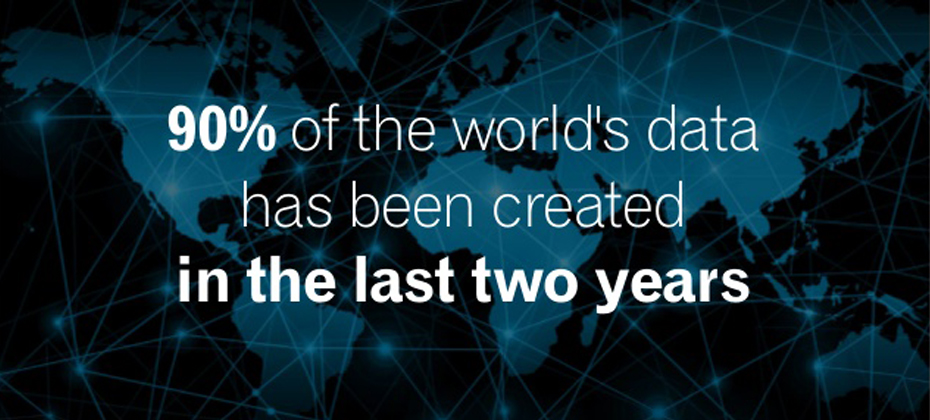
As Big Data becomes the norm in the credit industry and others, the seemingly non-stop efforts to accumulate more and more data leads me to ask the question - when is Big Data too much data? The answer doesn’t lie in the quantity of data itself, but rather in the application of it – Big Data is too much data when you can’t use it to make better decisions. So what do I mean by a better decision? From any number of perspectives, the answer to that question will vary. From the viewpoint of a marketer, maybe that decision is about whether new data will result in better response rates through improved segmentation. From a lender perspective, that decision might be about whether a borrower will repay a loan or the right interest rate to charge the borrower. That is one the points of the hype around Big Data – it is helping companies and individuals in all sorts of situations make better decisions – but regardless of the application, it appears that the science of Big Data must not just be based on an assumption that more data will always lead to better decisions, but that more data can lead to better decisions – if it is also the “right data”. Then how does one know when another new data source is helping? It’s not obvious that additional data won’t help make a better decision. It takes an expert to understand not only the data employed, but ultimately the use of the data in the decision-making process. It takes expertise that is not found just anywhere. At Experian, one of our core capabilities is based on the ability to distinguish between data that is predictive and can help our clients make better decisions, and that which is noise and is not helpful to our clients. Our scores and models, whether they be used for prospecting new customers, measuring risk in offering new credit, or determining how to best collect on an outstanding receivable, are all designed to optimize the decision making process. Learn more about our big data capabilities
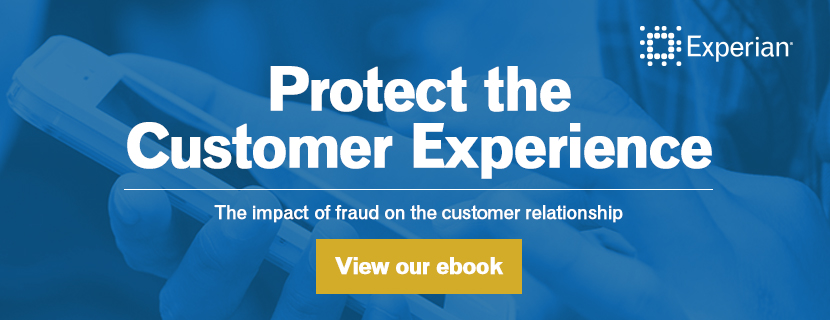
Protecting your customer The impact of fraud on the customer relationship Sadly fraudsters seem to always be one-step ahead of fraud-prevention strategies, causing organizations to play catch-up to the criminals. And as information security tightens and technologies evolve, so does the industrious nature of organized identity and online fraud. It should be no surprise then that fraud risk mitigation and management will continue to be an ongoing issue for organizations. But what continues to drive investment in identity management and online risk tools is the arms race across organizations to deliver superior customer experience and functionality. While the monetary cost of fraud losses can be high and rather detrimental, the impact of lost customers and overall reputational decline due to poor customer experiences can be higher. The key is finding the right balance between identifying and segmenting likely fraudulent customers across the vast majority of legitimate customers and transactions. I want to share a recent interactive eBook we launched which outlines the authentication and identity management balance with a focus on the consumer. We highlight current trends and what organizations should be thinking about and doing to protect their business, institution, or agency and customers. I hope you enjoy this look at the impact of fraud on the customer relationship.
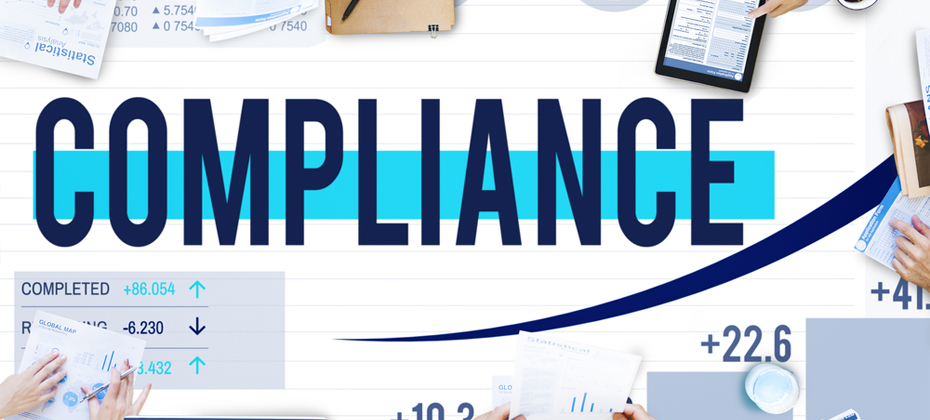
Our clients are facing three primary issues when it comes to regulatory compliance: time resources knowledge Many are facing Matters Requiring Attention (MRA) and Matters Requiring Immediate Attention (MRIA) and don’t have the staff or the capacity to complete all of the work themselves within tight deadlines. They also want their limited resources to work on internal, proprietary initiatives to grow the business and maximize profit and return. These activities cannot be outsourced as easily as regulatory and compliance work, which is relatively easy to parse out and give to an external third party. Quite often, a level of independent oversight and effective challenge is also a requirement that can easily be solved through the use of an objective, external third party. A lot of the regulations are still relatively new, and there are still many issues and knowledge gaps our clients are facing. They have insight into their own organization only and quite often aren’t aware of or able to leverage industry best practice without the view of an external third party with broader industry knowledge and experience. In terms of best practice, it all really starts with the data, leading to the attributes used in models to create sound risk management strategies, manage capital adequacy, and ensure the safety and soundness of the overall U.S. and global financial system. The integrity of data reporting, dispute management and compliance with all applicable regulatory requirements need to be an enterprise-wide effort. In the area of attribute governance, there are three primary areas of focus: Attribution creation — definitions; logic, code and accuracy; and how to reduce implementation timelines. Monitoring and maintenance — looking for shifts in attributes and their potential impact and facilitating updates to attributes based upon changes in reporting and upgrades to newer versions of attributes as the credit environment changes, such as during the most recent mortgage crisis, where loan modification and associated attributes were created and took on increased importance. And last but definitely not least, documentation — We cannot say enough about the importance of documentation, especially to regulators. Documentation ensures accuracy and consistent application and must record all general conventions and limitations. For model risk management and governance, focus areas should follow the expanded Office of the Comptroller of the Currency (OCC) Guidance from Bulletin 2011-12. This guidance includes expanded requirements for model validations including not just standard back testing, but also benchmarking, effective challenge, sensitivity analysis and stress testing. It also expands the guidance beyond just validation to model development and usage, implementation, governance and controls. In response to these OCC expanded guidance requirements, one of our clients was seeking an industry expert to serve as an independent third party to 1) conduct industry best practice and benchmarking in areas of reject inference methodologies and 2) validate production models used for risk underwriting, line assignment, pricing and targeting. After a full review and assessment, we provided the client with a clear road map to improve the process to conduct reject inference through knowledge transfer and best practices. We established a best-in-class approach to annual model validations on a model inventory consisting of retail, small business and wealth segment portfolios. We also delivered expedited results that also identified alternative methods of validation that assess variability in point estimates, as well as comply with OCC requirements for precision, ranking and population measurement statistics. Through our work, the client was able to leverage Experian to establish a global approach to reject inference methodologies, to augment existing staffing and to offshore resources in a cost-effective manner. There are three primary areas of loss forecasting, stress testing and capital adequacy planning: International — Basel accord National — U.S. Dodd-Frank Act Stress Testing (DFAST), including Comprehensive Capital Analysis and Review (CCAR) supervisory review Internal — Allowance for Loan and Lease Losses requirements Although there are similarities, there are also important differences among each of these three requirements and practices. For these reasons, most financial institutions in the United States are still providing and managing them separately. This obviously creates a strain on internal staff and resources. One of our clients had an initial compliance strategy in place but did not have the sufficient in-house staff and resources required to create, document and review its modeling and stress testing to satisfy regulators and internal auditors. The organization needed a consultant that could work closely with its in-house team to support sophisticated models that were tailored to meet its specific compliance obligations. We worked closely with the client’s team to provide extensive consulting support for a complex set of loss-forecasting models and other tools, applying industry best practices to fully document the models. Throughout the process, our consulting team discovered and identified content gaps to help ensure that all documentation was complete. We also provided ad hoc analytics to support the client’s model development effort and strategic and tactical guidance on stress testing model development for compliance. This enabled the client to develop primary and challenge models for DFAST’s CCAR requirements, as well as internal stress scenarios. It also provided the client with the following tangible business benefits: balance compliance with maximum profitability and revenue; provided knowledge sharing and best practices to help empower client employees; helped refine models based on feedback from internal and external governance organizations; supported models with academic research to help align the correct model to the correct processes; and provided assistance with model implementation and application. Click here for a recent video I did on how capital-adequacy positions are becoming crucial in analyst recommendations.